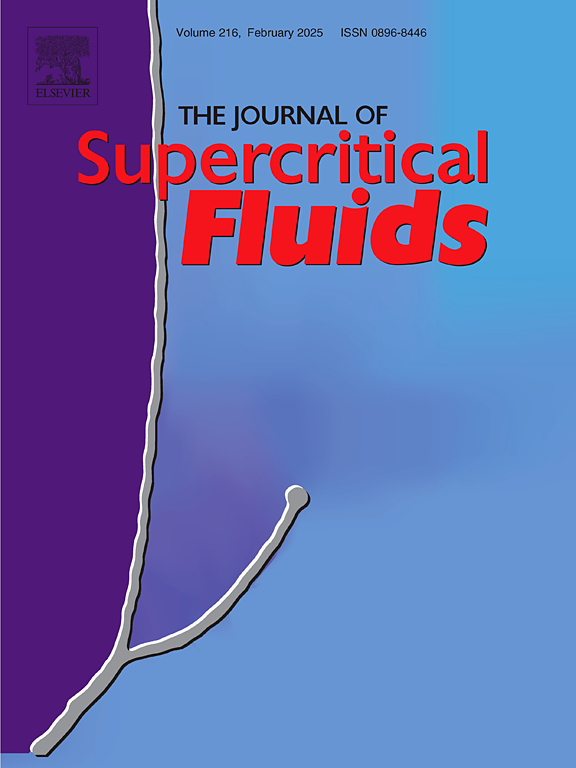经蒸汽爆炸预处理的大豆壳的亚临界水水解:高压综合工艺战略
IF 3.4
3区 工程技术
Q2 CHEMISTRY, PHYSICAL
引用次数: 0
摘要
对蒸汽爆破(SE)预处理和顺序亚临界水水解(SWH)进行了研究。在工业上,使用这种工艺策略具有优势,因为它使用相同的设备和仪器,无需分阶段运输原料。研究评估了严重程度系数 (SF) (2.75、3.05 和 3.35)和所用溶剂(蒸馏水和 0.5 % w/w 的 H2SO4)对 SE 效率的影响。采用最佳的预处理条件对 SWH 进行了综合处理。考虑了温度(230 和 260 °C)和溶剂/进料比(40 和 80)的影响。在综合 230 °C、S/F-40 的条件下,综合系统的 FS 产量为 19.19 ± 0.49 克/100 克 SH,FS 产量是未经处理的大豆壳在相同条件下的 3.3 倍,这表明了在这种操作策略(SE + SWH)下进行加工的优势。本文章由计算机程序翻译,如有差异,请以英文原文为准。
Subcritical water hydrolysis of soybean hulls pretreated by steam explosion: High pressure integrated process strategy
Steam explosion (SE) pretreatment and sequentially subcritical water hydrolysis (SWH) was studied. Industrially, there is an advantage in using this process strategy, since it uses the same equipment and instrumentation, without the need to transport the raw material in separate stages. The influence of severity factors (SF) (2.75, 3.05, and 3.35) and solvent used (distilled water and 0.5 % w/w of H2SO4) were evaluated in the SE efficiency. SWH was perform in integrated processing using the best pre-treatment conditions. The influence of temperature (230 and 260 °C) and the solvent/feed ratio (40 and 80) were considered. The integrated system resulted in a FS yield of 19.19 ± 0.49 g/ 100 g SH, for a condition Integrated 230 °C, S/F-40, a FS yield 3.3 times greater than that obtained in the same condition with untreated soybean hulls, demonstrating the advantage of perform the process under this operating strategy (SE + SWH)
求助全文
通过发布文献求助,成功后即可免费获取论文全文。
去求助
来源期刊

Journal of Supercritical Fluids
工程技术-工程:化工
CiteScore
7.60
自引率
10.30%
发文量
236
审稿时长
56 days
期刊介绍:
The Journal of Supercritical Fluids is an international journal devoted to the fundamental and applied aspects of supercritical fluids and processes. Its aim is to provide a focused platform for academic and industrial researchers to report their findings and to have ready access to the advances in this rapidly growing field. Its coverage is multidisciplinary and includes both basic and applied topics.
Thermodynamics and phase equilibria, reaction kinetics and rate processes, thermal and transport properties, and all topics related to processing such as separations (extraction, fractionation, purification, chromatography) nucleation and impregnation are within the scope. Accounts of specific engineering applications such as those encountered in food, fuel, natural products, minerals, pharmaceuticals and polymer industries are included. Topics related to high pressure equipment design, analytical techniques, sensors, and process control methodologies are also within the scope of the journal.
 求助内容:
求助内容: 应助结果提醒方式:
应助结果提醒方式:


